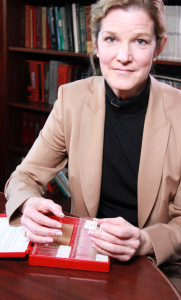Study done by researchers at the University of Washington determined that diagnostic concordance with consensus expert panel missing in nearly 25% of breast cancer cases studied
Standards of quality in clinical care are increasing at a steady pace and anatomic pathology is no exception. The most recent example is the publication of a study in a respected national medical journal that revealed how pathologists participating in the study produced an unexpectedly high rate of diagnostic inaccuracy for certain types of breast cancers.
This situation did not go unnoticed by the national media. On March 17, no less than The New York Times headlined their story on the findings of this story with the title: “Breast Biopsies Leave Room for Doubt, Study Finds.”
The accuracy of pathological diagnoses of breast biopsy results was called into question in the study published in the March 17, 2015, issue of the Journal of the American Medical Association (JAMA). Researchers reported that practicing clinical pathologists incorrectly diagnosed nearly 25% of breast biopsies presented to them in a test study.
Study Involved Practicing Pathologists in Eight States
The study was conducted by researchers at the University of Washington (UW). It involved 115 pathologists who interpret breast biopsies in clinical practices in eight states. The key findings were that participating pathologists had near-perfect agreement on invasive breast cancer. But it was a different outcome when these pathologists evaluated cases of ductal carcinoma in situ (DCIS) and atypical ductal hyperplasia.
Participating pathologists independently interpreted slides between November 2011 and May 2014 from test sets of 60 breast biopsies (240 total cases, one slide per case). These cases were made up of the following: 23 cases of invasive breast cancer, 73 DCIS cases, 72 atypia cases, and 72 benign cases without atypia. A 3-member panel of experienced breast pathologist established a reference diagnosis.
96% Concurrence for Certain Types of Breast Cancers
In total, participants provided 6,900 individual interpretations for comparison with the consensus-derived reference diagnoses. When diagnosing invasive breast cancer, the panel and participants concurred 96% of the time.
However, participating pathologists agreed with the consensus-derived diagnosis on less than half of the atypia cases, with a concordance rate of 48%. The concordance rate for DCIS was 84% and for benign without atypia it was 87%. The overall agreement between the individual pathologists’ interpretations and the expert consensus-derived reference diagnoses was 75.3%.
Each year 1.6 million women in the United States undergo a breast biopsy to see if they have cancer. Nearly 25% of biopsies indicate invasive breast cancer. The rest are categorized by pathologists according to a diagnostic spectrum that ranges from benign to pre-invasive disease.
Misinterpretation of Biopsies Can Cause Unnecessary Surgeries
UW’s Joann Elmore, M.D., M.P.H., is a Professor of Medicine and Adjunct Professor of Epidemiology. She was the study’s lead author, and stated that misinterpretation of biopsies can cause women to have surgeries and treatments they do not need, or to not receive potentially live-saving treatments.
“This is troubling when you know that women with DCIS diagnosis are having mastectomies or lumpectomy and radiation therapy. And there was even less agreement on diagnoses for atypia—equivalent to the chance of heads or trails on a flip of a coin,” Elmore said in a UW Health Sciences NewsBeat article.

Joann G Elmore, M.D., M.P.H., (pictured above) is lead author of a Journal of the American Medical Association (JAMA) report that shows practicing pathologists were excellent in diagnoses of invasive breast cancer but less likely to agree with a panel of experts when interpreting cases of ductal carcinoma in situ and atypical ductal hyperplasia. (Photo copyright UW Medicine)
Among the study participants, pathologists with lower weekly case volume, from non-academic settings or smaller practices were more likely to disagree with the consensus-derived reference diagnosis, “although the absolute differences in rates according to these factors were generally small,” UW stated. Women with dense breast tissue on mammography (versus low density) also were more difficult to diagnosis.
In addition to shaking the public’s belief in the biopsy as the gold standard in breast cancer diagnosis, the study may lead to additional wide-scale research into the accuracy of pathologists’ diagnoses.
JAMA ran an editorial alongside the study of pathologists’ accuracy in diagnosing breast cancers. It was titled: “Expertise vs Evidence in Assessment of Breast Biopsies, An Atypical Science.” The co-authors are Nancy E. Davidson, M.D., of the University of Pittsburgh Cancer Institute and the UPMC Cancer Center, and David L. Rimm, M.D., Ph.D., Yale University School of Medicine.
Accuracy of Pathologists’ Diagnoses Is “Relatively Understudied”
“The accuracy of the pathologist’s diagnoses is relatively understudied and represents an important knowledge gap at a time when medicine is becoming ever more evidenced-based,” wrote Davidson and Rimm. They labeled the study a “call to action for pathologists and breast pathologists.”
Davidson and Rimm went on to point to the 4% miss in the diagnosis of invasive cancer and the 16% discordance in the diagnosis of DCIS as “deeply concerning.” The editorial recommends the pathology community “redefine the definition of atypia so that it is more reproducible between viewers,” and consult with each other on difficult cases.

Nancy E. Davidson, M.D., (pictured above) is the Associate Vice Chancellor for Cancer Research at University of Pittsburgh Cancer Institute and UPMC Cancer Center. In a recent JAMA editorial, she labeled the breast biopsy study conducted by the University of Washington a “call to action for pathologists and breast pathologists.” (Photo copyright University of Pittsburgh)
Yet Davidson and Rimm also acknowledge the study’s limitations—the purposeful, increased representation of challenging cases and interpretation based on a biopsy on a single glass slide—and the challenges pathologists face.
Recognition of the Challenges Confronting Pathologists
“Morphologic diagnosis rests on broad acceptance of key criteria, some of which are easily and specifically defined, but many of which are very subtle and difficult to describe in words,” they wrote. “Diagnoses that rest on well-defined criteria (e.g., diagnosis of invasive breast cancer) are more likely to be observer-independent, whereas interpretation of subtle criteria such as architectural irregularity and nuclear pleomorphism will vary between observers as a function of training, experience, and perhaps innate cognitive skills.”
The study is seen as reinforcing the importance of women seeking a second opinion when undergoing testing for breast cancer.
“Our findings show that, particularly for women with dense breasts, the lack of consensus in diagnoses of atypia or DCIS is considerable,” study author Tracy Onega, Ph.D., from Dartmouth-Hitchcock’s Norris Cotton Cancer Center, told Science Daily. “The take-home message for women is that it’s not overly cautious to seek a second opinion with one of these diagnoses. In fact, it’s likely to be a good idea.”
Issues of Variability and Disagreement Not Unique to Field of Pathology
UW’s Elmore was quick to point out that diagnostic discordance is not rare in medicine. “The variability and the disagreement we found among these pathologists is not unique to the field of pathology or to the field of breast pathology,” Elmore said in an author video interview airing online at the JAMA Network. “Similar amounts of variability have noted in radiology among breast imagers, in cardiology, in internal medicine. This is not unique to the field of pathology. Even the experienced pathologists in our study, they had a hard time and they disagreed with each other on the diagnoses of some of these cases.”
While the accurate diagnosis of breast cancer currently hinges on pathologists’ microscopic examination of tissue samples, pathologists may have additional tools at their disposal in the not-too-distant future.
“We need to investigate the potential for molecular markers to try to improve our ability to come up with an accurate diagnosis, and we need to consider now that we can digitize these slides and come up with a digital image,” Elmore said in the JAMA author video interview. “Let’s see if the computer-aided detection programs can be developed to help us.”
Pathologists may find it noteworthy that this study was supported by the National Cancer Institute (R01CA140560, R01CA172343, and K05CA104699) and by the National Cancer Institute-funded Breast Cancer Surveillance Consortium (U01CA70013 and HHSN261201100031C). Interest in developing more accurate assessments of the diagnostic accuracy of pathologists is increasing.
It can be expected that findings such as those of the University of Washington researchers will spur pathology professional associations to develop better techniques and more effective methods of quality control and quality assurance. These efforts should be welcomed because pathologists should be out front in the drive to better measure quality and improve diagnostic accuracy.
—Andrea Downing Peck
Related Information:
Breast Biopsy Results May Not Be Accurate, UW Study Finds
Breast Biopsies Leave Room for Doubt, Study Finds
New York Times Writes about Pathologists’ Misdiagnoses of Breast Cancer Cases
Expertise versus Evidence in Assessment of Breast Biopsies
Diagnostic Concordance among Pathologists Interpreting Breast Biopsy Specimens



